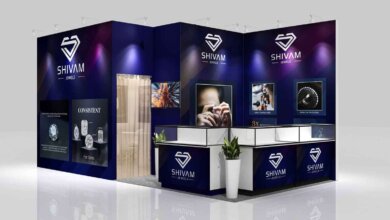Replicating Ultra-Fine Car Interiors in Dubai Model Making

Automotive design model making studios in Dubai are known for their high standards and precision. One of the most complex tasks in model making is replicating ultra-fine car interior details. These details help showcase the designer’s vision and allow clients to experience the feel of a car’s interior before production. In Dubai, this process combines craftsmanship, technology, and innovative materials to achieve realism on a miniature scale.
Using High-Resolution 3D Printing for Fine Components
One of the most important tools for replicating car interiors is high-resolution 3D printing. Model making Dubai studios use printers that produce extremely small and accurate layers. This allows them to create parts such as gear knobs, climate vents, seat stitching patterns, and dashboard controls with remarkable detail. The digital models are prepared using CAD software that captures every line and curve. Once printed, these pieces are cleaned and finished to match the final look of the real component.
Crafting Custom Textures by Hand
While machines provide precision, some details still require a human touch. Skilled artisans in Dubai’s model making industry handcraft textures such as leather grains, fabric patterns, and wood finishes. They use sculpting tools to add depth, fold lines, and stitching effects. These textures are then replicated using molds for consistency. Hand-finishing ensures the model captures the rich, tactile quality of real interiors, especially for luxury car brands.
Using Soft-Touch Materials for Realistic Feel
Interior elements are not only about visuals. The feel of materials plays a major role in how a car interior is perceived. Model makers in Dubai use soft-touch rubbers, foams, and faux leather to mimic the comfort of real seats and armrests. These materials are cut and shaped to scale, then carefully attached to the model. In some cases, real fabric samples are miniaturized and fitted into the model to replicate upholstery with perfect accuracy.
Precision Resin Casting for Repeated Small Parts
Resin casting is essential when repeating fine details like buttons, switches, or seat buckles. Once a master version is made, silicone molds are created to cast identical copies. This ensures visual consistency across the interior while saving production time. Resin allows for crisp detail, which is important when replicating digital screens, audio systems, or branding labels. Dubai studios use casting to efficiently produce complex small parts without compromising quality.
Color Matching for Interior Themes
Color is a major part of interior design. Model making studios in Dubai focus on accurate color matching to reflect the real car’s ambiance. Custom paint mixing is done to match leather tones, stitching threads, dashboard finishes, and more. Airbrushing techniques are used to create smooth surfaces without brush marks. Metallic finishes, wood grains, and matte accents are carefully applied to replicate the feel of real automotive interiors.
Laser Engraving for Intricate Graphics
Laser engraving helps add crisp and clean graphic elements to model interiors. This includes logos, touchscreen icons, speedometer markings, and control labels. In Dubai, model makers use laser tools to etch these features onto small surfaces. The result is precise, high-contrast text and patterns that are visible even at a miniature scale. This method is especially useful for high-tech dashboards and infotainment system replicas.
Lighting Effects to Showcase Functionality
Interior lighting plays a role in the modern driving experience. Model making studios in Dubai integrate micro-LEDs to simulate ambient lighting and dashboard illumination. These lights can be placed under panels, around screens, or inside control buttons. They help clients understand how the interior will look at night or under different conditions. This adds another level of realism to the design and improves the overall presentation.
Simulation of Moving Interior Features
Some models go beyond being static. Dubai studios sometimes add movement to interior parts. Doors may open to reveal interior layouts. Seats may recline or slide on rails. Steering wheels, mirrors, and glove compartments may function to a limited degree. These features help designers and clients explore the ergonomics and spatial flow of the vehicle. Small motors or magnets are sometimes used to add controlled motion to these elements.
Attention to Ergonomics and Proportions
Accuracy in size and proportion is vital. Dubai’s model makers carefully scale every interior element to ensure realism. This includes the height of seatbacks, spacing between controls, and dashboard angles. They rely on real design data and CAD files from automotive engineers. By ensuring correct ergonomics, the interior model becomes more than a visual tool. It becomes a way to study how drivers and passengers interact with the design.
Client Feedback and Customization Support
Automotive design in Dubai often involves premium clients who expect customization. Model makers build interiors that reflect individual tastes, including custom trims, rare materials, and specific layouts. Models are often presented in stages for client feedback. Suggestions are incorporated into the next version, which helps guide the final car design. This iterative process is supported by the model’s level of detail and realism.
Collaboration with Automotive Designers
Dubai’s model making studios work closely with car designers, interior stylists, and marketing teams. They receive digital files, material samples, and color palettes. This collaboration ensures every element of the interior is faithfully translated into the scale model. Communication between model makers and design teams helps refine the model until it meets every creative and functional goal.
Conclusion
Automotive design model making studios in Dubai are masters at replicating ultra-fine car interior details. They use a blend of digital tools, traditional craftsmanship, and advanced materials to bring luxury and innovation to life in miniature form. Every stitch, button, texture, and curve is crafted with care. The result is a model that not only looks real but feels authentic. These interiors help designers, clients, and investors experience the future of car design long before it hits the road.




